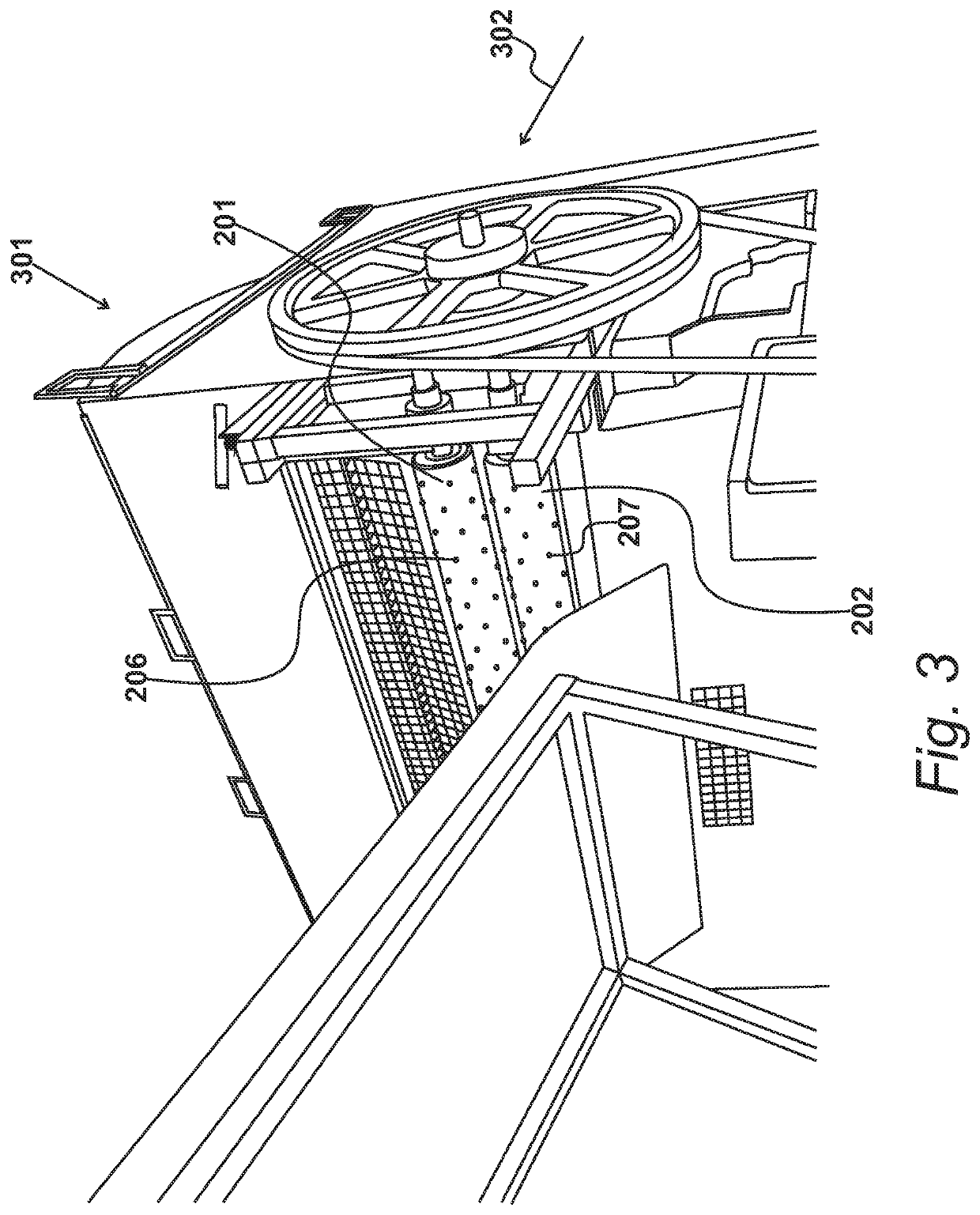Separating components of a pocket sprung mattress sub-assembly
a technology for separating components and mattresses, applied in the direction of upholstery auxiliaries, grain treatments, manufacturing tools, etc., can solve the problems of high-grade cutting blades, difficult manual handling of springs, and present dangerous sharp edges
- Summary
- Abstract
- Description
- Claims
- Application Information
AI Technical Summary
Benefits of technology
Problems solved by technology
Method used
Image
Examples
Embodiment Construction
FIG. 1
[0017]A pocket-sprung-mattress sub-assembly is shown in FIG. 1. As part of a recycling exercise, components surrounding the sub-assembly, in order to complete the mattress, have been removed. The remaining sub-assembly consists of individual coils 102, each surrounded by a polypropylene or similar material pocket 103. These pockets are in turn glued together on all sides to form the complete spring sub-assembly.
[0018]Assemblies of this type are difficult to recycle, therefore existing recycling operations are uneconomic and it is usual for sub-assemblies of this type be directed toward landfill. It is possible to remove the springs by hand but this is time consuming and dangerous. Furthermore known shredding operations are difficult to implement, given that the steel present within the springs will tend to damage shredding machines, causing the machine to jam when a subsequent batch is introduced. Thus, known automated techniques fail to meet their expectations, in terms of th...
PUM
 Login to View More
Login to View More Abstract
Description
Claims
Application Information
 Login to View More
Login to View More - R&D
- Intellectual Property
- Life Sciences
- Materials
- Tech Scout
- Unparalleled Data Quality
- Higher Quality Content
- 60% Fewer Hallucinations
Browse by: Latest US Patents, China's latest patents, Technical Efficacy Thesaurus, Application Domain, Technology Topic, Popular Technical Reports.
© 2025 PatSnap. All rights reserved.Legal|Privacy policy|Modern Slavery Act Transparency Statement|Sitemap|About US| Contact US: help@patsnap.com



